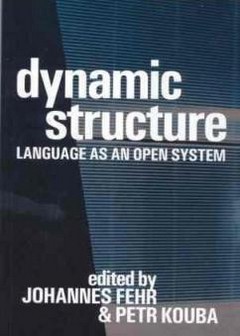Dynamic Structure

Fehr, Johannes;
Kouba, Petr
Published: 2007
Literaria Pragensia, Praha, ISBN 80-7308-139-3
This volume assesses the position of structural linguistics in phenomenology, psychoanalysis, ethnology, biosemiotics and the theory of technology. Johannes Fehr writes on the impossibility of regarding language as a discrete formal entity, the meaning of its forms always being determined by the forms adjacent to them. Jan Sokol addresses the role of linguistic differentiation in the acquisition of a knowable world for infants and also for scientific communities. Ondřej Sládek concentrates on the distinctions between Jan Mukařovský's world-oriented aesthetic theory and Saussure. Three essays on phenomenology follow, Michal Ajvaz pointing to Merleau-Ponty's interest in Saussurean structuralism, and his eventual realisation of the depth of its challenge to the individual subject as the centre of experience. Petr Urban argues that despite Husserl's early refusal essentially to relate word and thought, his later philosophy suggests that the survival of scientific knowledge requires an intersubjectivity only possible through language. The encounter between self and other in psychoanalytical and ethnological discourse is the subject of Petr Kouba's essay on Merleau-Ponty, which closes with an appreciation of the later writings on common territory and encounter as a way of moving beyond the tacit cogito. In an essay comparing Saussure and Paul Ricœur on the question of meaning, Yong-Ho Choi suggests that the upsurge or aperture in the linguistic system, the moment at which language becomes discourse, which Ricœur believed to be lacking in Saussure, was already present in the linguist's differentiation of one linguistic form from another over time. Two essays on the semiotics of the environment follow, with Alice Kliková suggesting an interpretation of Uexküll's analysis of the perceptual world of organisms that rids it of residual anthropocentrism by ceasing to identify the human perceptual world with an inferred universe that supports the perceptual experience of all other organisms. Emil Volek relates ostensive behaviour to formal linguistic structures in an essay in evolutionary cognitive science that defends against extremes of sceptical recursion in linguistic thought. The book closes with Josef Fulka's reading of the role of the signifier in the creation of the imaginary, the symbolic and the real in Lacan; and Louis Armand's challenging text on the consequences for concepts of act and agency in a computational-materialist model of human cognition. Maintaining a strong sense of the role of structure in linguistic thought, these papers nonetheless investigate the creative, destabilising, open moments of innovation that characterise the kind of structure language can be said to be


